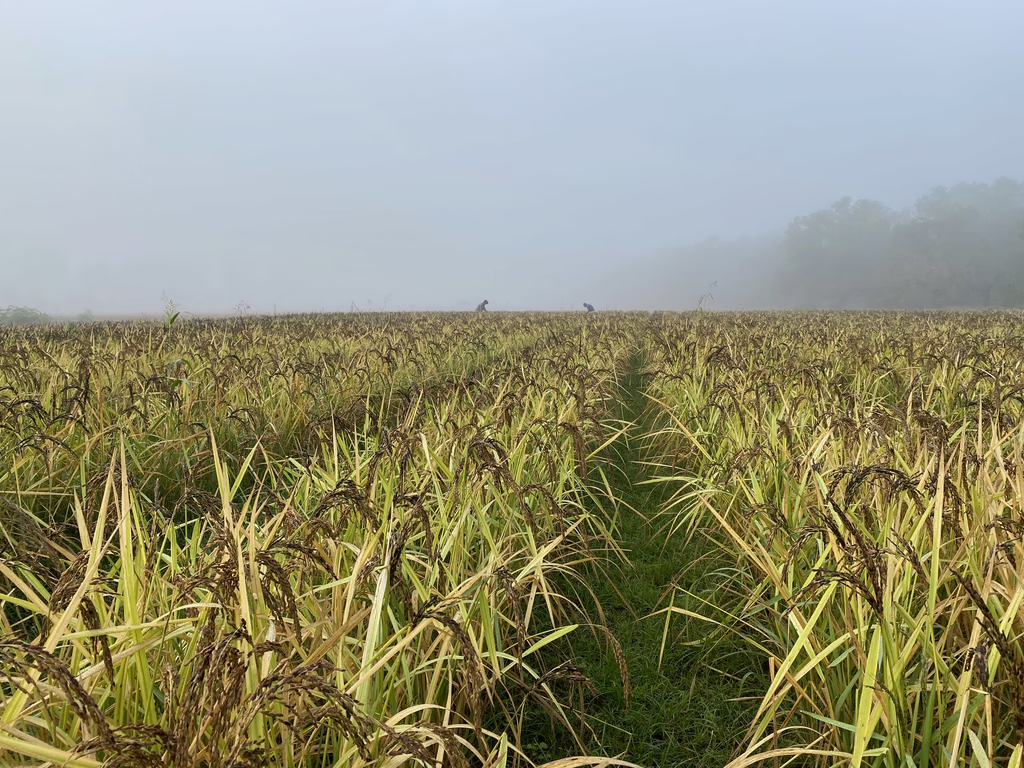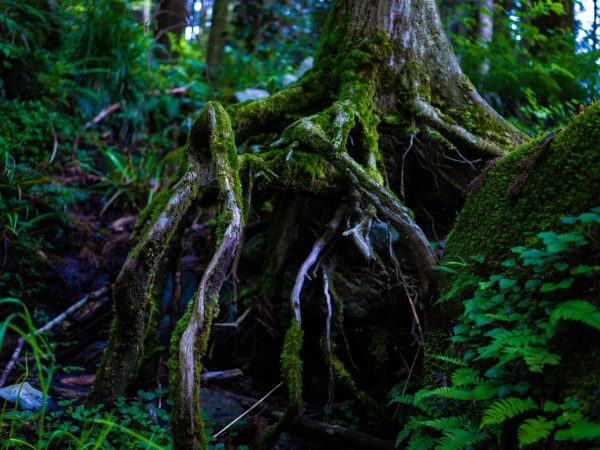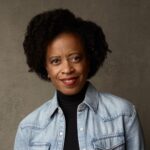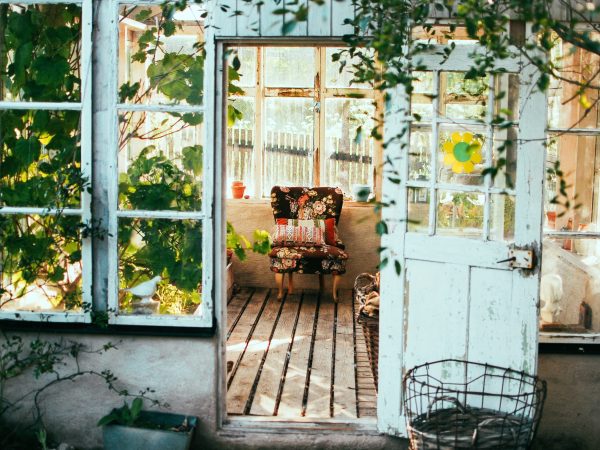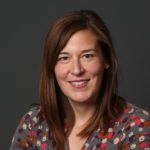Nikayla: You’ve mentioned Our Ancestor Journey as one of the most meaningful projects of your life. What is ancestor work? Why is ancestor work so important?
Konda: Ancestor work is really just intergenerational work. Oftentimes when we think intergenerational, we only include people alive on this planet today. Intergenerational work also includes those who have come before us and brings in perspectives from different time periods and dimensions. Ancestor work is about understanding ourselves. In order to heal forwards, we need to heal backward, and in order to heal backward, we need to know the truth of who we are. We’re our ancestors. We are their DNA. We are expressions of their experiences.
There is a deep connection between us and the people who are our blood. What they experienced then impacts our body now – our physical body, mental body, spiritual body, and world body. In these bodies, there is so much wisdom, pain, suffering, and joy.
If someone is adopted or doesn’t know their blood family, ancestor work is still available to them. You begin the approach by asking yourself, “who has impacted me? Who surrounded me? Who have I chosen as my family?” Chosen relatives are ancestors too. No one is exempt from the ancestor work.
If we are really about healing ourselves and the world, we cannot do it without doing the ancestral work. Oftentimes, we inherit our worldviews from our ancestors, and doing this work fundamentally changes our worldviews.
Nikayla: How has the ancestor work changed you?
Konda: I’m anchored. I’m just so anchored. I know why I’m here in the South. I would have never come. It wasn’t my idea to come to the South. I wasn’t planning on it. When I found myself here, and I started doing ancestor work, I realized: oh wow, this is why I’m doing what I’m doing. The puzzle pieces started coming together in such a profound way. Ancestor work makes you stay the course instead of thinking that you’re trippin’.
What if you connect to the most desperate piece of land you see, and set an intention to steward that piece of land?
People would tell me: Why are you in the South? You’re just trippin’ girl, you need to go back. I understand now this is the work I was intentionally brought here to do, and it took those ancestral voices and energies to get me here. Konda Mason, as I know her, would not have come to the South on her own.
Nikayla: Do you want to bring any of those ancestors into our conversation?
Konda: Charlie Mason is my paternal grandfather. He lived in Georgiana, Alabama, and owned a little land and a store. One day, he decided to buy a car, and that decision put the local white folks over the top. He was a successful Black man, and they had had enough of it. Charlie found out the white folks were planning to lynch him, so he packed up the whole family, my father was only an infant at the time, and fled the South. They ran all the way to El Centro. Terror and violence forced my family off their land. They lost everything.
Charlie worked the land for a long time, and in the end he got nothing for it. In the United States, land is the basis of wealth. My family didn’t gain any wealth. Most Black families never gained any wealth from the land they worked, from the people they fed. Black Americans fed this country, Europe, and other places around the world.
Rice is the staple food in Africa, and it doesn’t easily spoil. During the Transatlantic slave trade, ships wanted rice for the long boat rides to and from the New World. But along with pillaging West Africa for rice, Europeans also enslaved the African rice farmers.
The rice farmers had these ingenious ways of farming rice across different ecosystems and topographies. People were farming rice in wetlands, dry lands, high lands, low lands. West Africans were experts in farming rice, and they were the economic engine of the New World. Their enslaved labor made Charleston, South Carolina the rice capital and richest city in the world.
Our legacy is around rice. So with Jubilee Justice, we’re owning the means of production, and we’re doing it for the benefit of all of us and the planet. Instead of extracting, we’re regenerating the soil. We’re learning about what the land needs and what our bodies need. The land is where the action happens.
The land is also where the harm happened. It’s the scene of the crime, so to speak. There’s a lot of trauma around land. How do we move through that and reclaim ourselves as stewards of the land?
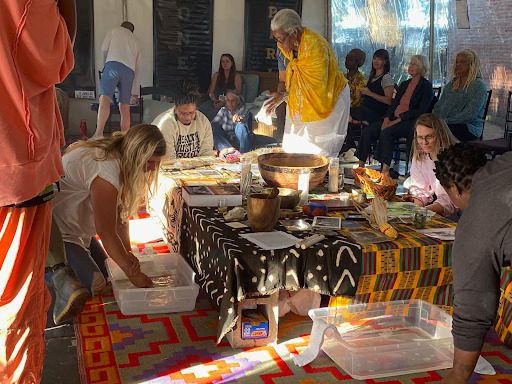
Nikayla: I’m really hearing that you feel accountable to your ancestors.
Konda: Oh, absolutely. I mean, think of it this way:
White folks, oftentimes inherit bank accounts and stock and all kinds of financial products from their ancestors. African Americans, whose African ancestors were so exploited and so brutalized, didn’t get paid. There are no bank accounts or property deeds to pass down. But in my book, what they did was time, and I think it’s important we see time as a currency. They put in their time and their life to build this country into the economic superpower it still is today. I feel like what we’ve inherited is their sweat and tears and their time.
So what am I going to do with this time? How am I going to spend this currency? I have an obligation to spend it wisely.
Nikayla: I want to return to land, and ask a very basic question: How would you define land?
Konda: In addition to land being the physical ground upon which we live, land is the basis of our physical nourishment, growth, and being.
When you think about how planetary life came into being, with the stars colliding and bursting, then Earth forming, life forming, and then humans forming, all these forms are the same carbon, nitrogen, phosphorus, and on. The same exact elements that make up the stars, make up this land, make up humans. You could also think of it as what’s made up of stars, is made up of land, is made up of humans. Humans are really just walking and talking land with a particular kind of consciousness.
Not just our physical nourishment, but our emotional nourishment as well. Our emotional nourishment from the land comes from our belonging to it, just how we are emotionally nourished by our belonging to one another. It’s just like when in a room full of people we love we feel grounded, happy, and connected.
When we are disconnected from the land, we’re deprived of this nourishment. Lack of belonging is an epidemic right now, and not just with each other, but with the land too. Humans need belonging with each other and with land, and that’s a story we hear less often. I don’t think we understand that our belonging to land is just as visceral and important as belonging to human beings. We don’t know this belonging is missing until we experience how it feels to belong.
And my God, all the nature. The manifestation of formations on formations is a phenomenal material phenomenon that we have so little knowledge about, even today. With just a little knowledge, I think, you have so much appreciation for the connection between humans and land. Humans need land, and land needs humans. The relationship goes both ways. Oftentimes, people think “oh if humans weren’t here, the land would just be.” But I say: no, the land actually needs our input, just not our harmful input. The land needs regenerative input from us, and we have that capability.
So to me, land is physical, emotional, and spiritual.
We have to put out the internal and the external fire, and not wait for one to extinguish before we get to work on the other.
Nikayla: You’ve stumbled into my next question here: I’ve really only felt that connection to land when I’m on some empty stretch of beach, on a hike through a forest, or in a massive green urban park. I’ve tried to be more intentional about my relationship with land in my day-to-day life, but I’m in an apartment in Oakland without a front or backyard. I’ve gone down a few times to the sidewalk Sweetgum tree to begin an altar practice, but I feel so self-conscious in the city with all these people looking on, watching me. How might a city dweller begin an intentional relationship with land?
Konda: It begins with observation. Observation is the first principle in permaculture. Observe the land that’s all around you. You’re not just sitting in space. Is it really true that someone in a city doesn’t have access to land? Through observation of your surroundings, you may find the answer becomes a little different.
In an urban environment, you walk on a city sidewalk and notice: there is a tree. The tree may be land that has been taken for granted or hasn’t been tended to. Maybe this tree is malnourished. It’s getting fumes from cars instead of being a forest. What would it take for you to bring a bottle of water to this tree?
In urban environments, it’s not that the land isn’t accessible, but it’s that the land is struggling and may need healing. What if you connect to the most desperate piece of land you see, and set an intention to steward that piece of land? It’ll change you.
There’s land in the city. It’s just a different manifestation with a different history.
Nikayla: Yes, changing the story we tell ourselves about land. You’ve spoken a lot on the work of changing stories. Oftentimes, when people talk about social change and telling different stories, they’re pointing to the outer, meta, cultural stories that are so much embedded in Western society. Capitalism. White supremacy. Patriarchy. And on. I find it so interesting that when you speak about changing stories, you focus on the inner stories. The stories that live within an individual about the individual that we may inherit from our families or are taught in our upbringing. Can you tell me more about how the stories in here are so important in the course of changing the stories out there?

Konda: How we feel, our personal backgrounds, our environments, our parents, and so on, color the lens through which we view the world. The lens through which we look at anything is colored by our experiences. When we tell our stories, the inner stories, we’re coloring those stories through this lens too.
We all have stories about our life we tell again and again. These stories may be through a lens that is accusatory or blaming. If we change the lens to one that is one of healing, nurturing, compassion, and especially self-compassion, the stories then emerge in a different way. The old story comes through another door, and then that door unlocks another door, that unlocks another door. You then find yourself outside, in the world, telling stories that unlock doors through the lens of self-compassion.
But again, it begins with observation. If we can observe ourselves and observe the stories we’re telling, then we can see where we may need to apply a lens of compassion. That’s how we change the stories.
Nikayla: If we want to change the outer stories, it starts with observing the stories as they are told inside of us? Mindfulness is really critical here, isn’t it?
Konda: It’s all about mindfulness.
Nikayla: I just attended Bioneers, a conference that really seems to keep an intention to tell different stories at the heart of all its programming. While I was there, I really noticed two different stories being told by the panelists across sessions. I saw this play out most visibly on a panel about American economic growth.
On one hand, and I’m simplifying of course, there is the story told by the more classical environmentalist: the biggest problem is the climate crisis, we need to electrify everything no later than tomorrow, do whatever we need to do to build the political coalition to get there, and worry about the rest of our problems after. On the other hand, there is a more holistic story told, and most often by the BIPOC voices: there is no simple way out of the climate crisis because it is bound up in a greater polycrisis, and if we shortcut through reckoning with and healing the historic and ongoing underlying causes of polycrisis, what ills us now will remain and probably worsen.
Can speak to this tension? What’s the middle way between them?
Konda: A lot of the classic environmentalists think there is not enough time to do this other work. “The house is on fire.” Yes, the house is on fire. Externally, as well as internally. There is no way to quench the outside fire and leave the inside fire burning. It’s just not going to happen.
So in my opinion, it’s a false dichotomy. It’s simultaneous work. We have to put out the internal and the external fire, and not wait for one to extinguish before we get to work on the other. It all has to happen, and for us to deny any aspect of it, is for us to deny the answer. It’s to continue to mess around with a half-baked way of approaching complex issues. This is complex, and it needs to be addressed with respect to all the different aspects you speak to.
The house is on fire. We should put it out with water, yes. But oh, the bucket has a hole at the bottom. We have to deal with the busted bucket too. We need the water, and we also need the bucket. We’re wasting our time by thinking that we’re wasting our time on the water or the bucket.
Nikayla: Tell me more.
Konda: Think about three people in a dark room with an elephant. Someone only touches the tail, and they think the elephant is long and thin. Someone touches the tusk, and they think the elephant is long, hard, and cold. Someone touches the elephant’s side, and they think the elephant is flat. You have to really step back and look at, literally, the whole elephant in the room. Until we do that, we’re solving for the just tail or just the tusk. We’re not solving for the whole elephant.
In my bones I know this to be true. I appreciate all the people doing the great environmental work. I give them thanks, and that’s not all there is. Everything is connected. We have to deal with the other issues. All environmental problems have a social justice aspect.
It’s avoidance. It’s easier to save the planet, even though that’s hard as hell, than to think you could save the little Black boy who shouldn’t be in jail right now. It’s all one system. The humans, the environment, the animals, the creatures, the sun, the moon, the stars – it’s all one system.
Nikayla: Social movements work well for ushering in outer change. How does a social movement begin to usher in this inner change too?
Konda: Being intentional about being proximate to this other side of the coin we’re talking about here. Proximity is an intentional act that is proactive about getting out of your comfort zone. Willingness to be uncomfortable is the way through to comfort.
I think of my white brothers and sisters who don’t want to deal with race, but they just can’t get around it. It’s everywhere. I believe john a. powell said, “race is the thing we know the least about, but it touches everybody.” It’s about choosing to be proximate and dealing with it.
Lack of belonging is an epidemic right now, and not just with each other, but with the land too.
Nikayla: And what’s through the discomfort? Where does choosing to be proximate lead us? Do you have a vision of the end of these means?
Konda: I would have said earlier that there is no such thing as the end of the work, but yes, I have a vision. I have lived it, and I have co-created it.
On Our Ancestral Journey, we went on a journey as forty people, twenty white and twenty Black. We went in not really knowing or trusting each other. We went in scared, but trusting. Two years later, we came out.
Through Our Ancestral Journey, we dealt with land, race, money, and spirit. Land as stolen land, extracted land, land as the basis of wealth, land being bought and sold. Race, the biggest obstacle we have ever created as human beings. Money, how we’ve taken and used money, and money being misrepresented as having power, when it has absolutely no power other than the power we assign to it. Spirit, as who we deeply are.
The forty of us became a family. And the love, the love, the love, we created so much love, in those two years. This is the answer. I’ve never seen it happen before like this with strangers, and it’s hard for me to even try to describe.
We were proximate with each other for two years, to each other’s stories. The hard stories, the joyful stories, and the stories just discovered. We were proximate to each other. Black people said things they typically don’t say in front of white people. White people said things they certainly don’t say in front of Black people. We were honest, as well as compassionate. It was magical.
I know what the future can be. I saw it. I breathed it. I still have it with me. I know what can happen, there is no doubt in my mind. I am forever hopeful.
Nikayla: Sounds like you’ve been to the mountaintop.
Konda: I’ve been to the mountaintop with thirty-nine other people. Who would have known it would be with them? I didn’t know. But I’m so grateful, just so grateful. There is an answer.
We can get through this without all the guilt, shame, and blame. That’s not to say push it aside, we have to go through all of it, but you go through and you do it together. Relentlessly together.
